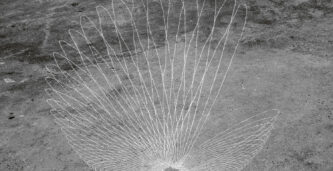La Pierre “Cité des musiciens”
La Pierre
“Cité des musiciens”
Photographies by Jean-François Fourmond
Text by Charles Haquet
Sounds by Xavier Jolly
L’ORANGERIE DU SÉNAT
19 bis rue de Vaugirard 75006 paris
1 juin ➜ 12 juin 2023
Every day, 11h to 20h, Free Entrance

LA PIERRE “CITÉ DES MUSICIENS”
The end of one world, the beginning of another.
In 1960, the new franc replaced the old one, France exploded its first atomic bomb in the Sahara. And while Johnny Hallyday was singing “Oh Baby”, the French colonies – Mali, Gabon, Senegal – were becoming independent.
In Bagneux, workers were pouring the first concrete for a new housing estate, the Pierre Plate. It was a time of “large housing estates” which, it was hoped, would bring a certain social harmony. In fact, the first years were happy ones. The ” Gaulois “, Portuguese and West Indians lived in harmony. “Everyone knew each other, the city had a soul,” recalls one resident. But soon the enthusiasm gave way to criticism. Transport, public facilities, shops… In these hastily built and rapidly deteriorating housing estates, everything was lacking. The social mix is crumbling. So is living together.
What is left today? What should we do with these disenchanted places which, in their own way, tell the story of our modernity and our collective history?
At La Pierre Plate, the construction of the Grand Paris has accelerated the reflection. With the arrival of the metro, it was impossible to leave the Pierre “as is”. Destruction of several bars, renovations… Started in 2019, the rehabilitation is still in progress. Soon, new buildings will emerge. But for the “historical” inhabitants, this urban renovation is above all synonymous with disappearance. The disappearance of their past.
For three years, Jean-François Fourmond, Charles Haquet and Xavier Jolly have been exploring the area, giving voice to its inhabitants, collecting the memory that will soon be lost. And also to try to change the way we look at these areas, which are often reduced to the triptych drugs-violence-unemployment.
This is the work we are presenting to you today, in sound, text and images. Scan the QR codes and you will hear the inhabitants tell you about “their” housing estate. Bantering, funny or privacy, poetic outbursts or sepia memories… Their testimonies reveal their doubts, their hopes and the way they are living this urban revolution. And, also, their sadness to see these bars disappear to which, despite everything, they ended up getting attached.
You cry twice when you live in the Pierre Plate,” says one of them. The day you get there and the day you leave.
– Charles Haquet 2023.
LA PIERRE “CITÉ DES MUSICIENS”
La fin d’un monde, le commencement d’un autre.
En cette année 1960, le nouveau franc chasse l’ancien, la France fait exploser sa première bombe atomique dans le Sahara. Et tandis que Johnny Hallyday chante « Oh Baby », les colonies françaises – Mali, Gabon, Sénégal – accèdent à l’indépendance.
À Bagneux, des ouvriers coulent les premiers bétons d’une nouvelle cité, la Pierre plate. L’époque est alors à ces « grands ensembles » synonymes, espère-t-on alors, d’une certaine harmonie sociale. De fait, les premières années sont heureuses. « Gaulois », Portugais et Antillais cohabitent sans heurts. « Tout le monde se connaissait, la cité avait une âme », se souvient une habitante. Mais bientôt, l’enthousiasme fait place aux critiques. Transports, équipements publics, commerces… Dans ces cités construites à la hâte et vite dégradées, tout fait défaut. La mixité sociale s’effrite. Le vivre-ensemble aussi. LA PIERRE “CITÉ DES MUSICIENS”Qu’en reste-t-il aujourd’hui ? Que faire de ces lieux désenchantés qui, à leur manière, racontent notre modernité et notre histoire collective ?
À la Pierre plate, le chantier du Grand Paris a accéléré la réflexion. Avec l’arrivée du métro, impossible de laisser la Pierre « dans son jus ». Destruction de plusieurs barres, rénovations… Démarrée en 2019, la réhabilitation est toujours en cours. Bientôt, de nouveaux immeubles sortiront de terre. Mais pour les habitants « historiques », cette rénovation urbaine est surtout synonyme de disparition. Celle de leur passé.
Durant trois ans, Jean-François Fourmond, Charles Haquet et Xavier Jolly ont arpenté cette cité pour donner la parole à ses habitants, recueillir cette mémoire qui, bientôt, s’effacera. Et, aussi, tenter de décaler le regard porté sur ces ensembles, souvent réduits au triptyque drogue-violence-chômage.
C’est ce travail que nous vous présentons aujourd’hui, en sons, textes et images. Scannez les codes QR, vous entendrez les habitants vous raconter « leur » cité. Propos badins, drôles ou intimes, élans poétiques ou souvenirs sépia… Dans leurs témoignages affleurent leurs doutes, leurs espoirs et la façon dont ils vivent cette révolution urbaine. Et, aussi, leur tristesse de voir disparaître ces barres auxquelles, malgré tout, ils finissaient par s’attacher.
« On pleure deux fois quand on vit à la Pierre plate, résume l’un d’eux. Le jour où l’on y arrive et celui où l’on en part. »
— Charles Haquet 2023.





![Didier Van der Borght, Opuntia humifusa II, 2022.Photographie, tirage argentique sur papier, 50X50cm [cadre 70X70].](https://galerielligat.com/wp-content/uploads/2022/10/Didier-Van-der-Borght-Opuntia-humifusa-2-50x50-Photographie-tirage-argentique.-Cadre-70X70-2022-333x171.png)

